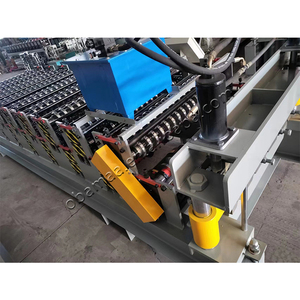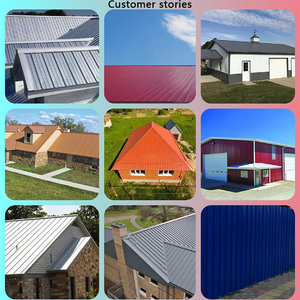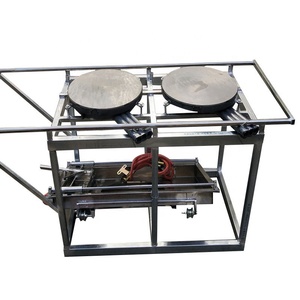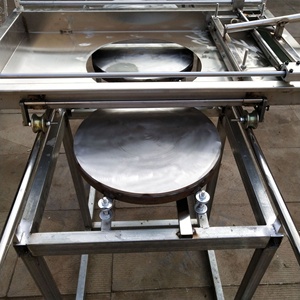
All categories
Featured selections
Trade Assurance
Buyer Central
Help Center
Get the app
Become a supplier

(566 products available)




















Las dobladoras plancha son herramientas que ayudan a doblar las chapas metálicas. A continuación se presentan las diferentes clasificaciones de las dobladoras planchas.
Clasificación según el material de la hoja:
La hoja de la máquina dobladora de metal se clasifica en:
Acero: Esta máquina tiene hojas de acero inoxidable. Las hojas son duras y suaves. Pueden soportar grandes cargas y doblar metales pesados. Tienen buena resistencia a la corrosión. Por lo tanto, son ideales para entornos húmedos o con productos químicos. Estas hojas son adecuadas para dobladoras planchas industriales que manejan grandes cantidades de metales pesados.
Plástico: Esta hoja de la máquina está hecha de materiales plásticos. Las hojas son ligeras y flexibles. Son adecuadas para doblados con menos pesos y de formas complejas. Tienen buena resistencia al desgaste y son fáciles de limpiar. Estas hojas son adecuadas para entornos donde se requiere higiene, como la industria alimentaria o médica. Ambas hojas son adecuadas para diferentes aplicaciones de doblado.
Clasificación según la forma de doblado:
Esta clasificación se refiere a la forma en que se dobla el material. Hay tres tipos: en la línea, de caja y de radio. La dobladora de línea pliega el material en una línea recta. La dobladora de caja forma un ángulo de caja o doblado de caja. La dobladora de radio hace un arco o curva en el borde doblado. Dependiendo de la forma del doblado deseado, se puede elegir entre estas máquinas para obtener el doblado requerido.
Clasificación según la estructura de la máquina:
La dobladora de escotilla tiene dos hojas. Ambas son ajustables vertical y horizontalmente. Se utilizan para hacer ángulos y formas en las chapas metálicas. La dobladora de barras tiene hojas en forma de barras. Se utilizan para hacer dibujos en las chapas metálicas. La dobladora de placas tiene hojas en forma de placas. Se utilizan para hacer pliegues y dobleces en las chapas metálicas. Todas estas máquinas son útiles para formar diferentes tipos de metal.
Design of folding boards
The folding boards are designed to make it easier to fold clothes. They are usually made of wood or plastic and have a smooth surface. Some folding boards are small and can be used on top of an ironing board, while others are large and designed to be used standing up. Folding boards are often shaped like an A, with two panels that open up and fold down.
Design of ironing boards
The ironing boards are designed to provide a flat surface for ironing clothes. They usually have a padded top covered with fabric, which is stretched tight over a frame. The height of the ironing board can be adjusted to make it comfortable for the user. Some ironing boards have legs that fold in and out like a beach chair, allowing for easy setup and takedown. Others are mounted on walls and fold down when needed, like a Murphy bed.
Design of ironing machines
The ironing machines are designed to press clothes quickly and easily. They have two heated plates that open and close like a book. The user places the garment between the plates and presses them together to iron. Some ironing machines are small and handheld, while others are larger and require a tabletop to operate. The bigger models work like printing presses, with the user feeding in a stack of clothes at a time.
Design of steam rollers
The steam rollers are designed to remove wrinkles from clothes using steam. They have a water reservoir that generates steam, which is then applied to the fabric. The user rolls the steamer up and down over the garment, much like a rolling pin. Steam rollers are compact and portable, making them ideal for use at home or while traveling. They work by relaxing the fibers in the fabric with hot steam, making the wrinkles fall out.
Industrial sector
In all industries where metal sheets are used to manufacture parts or articles, industrial plate rollers are used to obtain the necessary sheets. For instance, a metal sheet can be rolled into the desired cylinder to make a pressure vessel. The industrial sector also uses these machines to precisely fold and crimp sheet metals.
Construction industry
The construction industry uses plate rollers to bend metal sheets into specific shapes for roofing, siding, ductwork, and other structural and architectural features within buildings. They are used to create precise curves and bends needed in construction projects.
Automobile industry
The automotive industry uses metal dobladoras plancha to shape car body parts, create complex curves for exterior panels, and manufacture components such as exhaust systems and chassis parts. They are used to make the desired shapes and curves required in the automobile.
Shipbuilding industry
The shipbuilding industry uses these machines to bend plates into the desired shapes for ship hulls, decks, and other structural elements. They are used to give metals the required shapes to make ships and boats.
Oil and gas industry
In the oil and gas industry, these machines can be used to manufacture pipes, tanks, and other equipment. They can also make pressure vessels and complex pipeline components. The oil and gas industry uses these machines to make the equipment and tools necessary for oil and gas exploration and production.
Aerospace industry
The aerospace industry uses plate rollers to manufacture aircraft components such as wings, fuselage sections, and landing gear parts. They are used to make precise bends and shapes needed for flight safety and performance.
Art and architecture
In art and architecture, metal benders are used to create sculptures, installations, and architectural features. They are used in art galleries and museums to make works of art. They are also used in buildings to create unique architectural designs.
Energy sector
The energy sector uses plate rollers to produce components for renewable energy systems. For instance, in wind energy, the blades of wind turbines can be manufactured using these machines. In solar energy, metallic structures for solar panels can be made with plate rollers.
When choosing a metal bender, these factors should be considered to ensure the equipment meets the needs and works within the required constraints.
Required capacity and specifications
It is important to determine the thickness and type of material that needs to be bent. The required maximum angle for the bends and the number of bends needed can also determine the right machine to go for.
Machine types
Considering the various types of machines, it is important to assess which will be the most beneficial for the required tasks. Plancha dobladora de metal machines use rollers to bend metal sheets into cylindrical shapes, while others use brakes to create sharp angles and folds. Considering the required capacity and specifications, choosing the right machine for the job should be easy.
Materials used
Considering the materials used in the construction of the dobladora plancha is also important. Some machines are made with strong and durable materials that can withstand heavy usage over long periods. Other machines are made with lighter materials that cannot handle large workloads and may wear out quickly.
Power source
Power sources for metal benders include electricity, hydraulics, and manual systems. Electric and hydraulic benders are suitable for large-scale production, while manual benders are ideal for small-scale operations. The choice of power source can also affect the machine's portability and ease of use.
Ease of use and safety features
When choosing a metal bender, looking out for its user-friendly controls and safety features is ideal. Metal benders with safety features such as emergency stop buttons and proper guarding can help prevent accidents and injuries in the workplace.
Q1: How can one ensure the panel beading machine's safety during operation?
A1: To ensure safety, panel beading machines should be equipped with emergency stop buttons, safety guards, and proper lighting. Additionally, operators should wear appropriate personal protective equipment (PPE) such as safety glasses, gloves, and hearing protection.
Q2: What are the maintenance tips for a panel beading machine?
A2: Regular cleaning of the machine, checking for worn-out parts, and lubricating moving components are some maintenance tips. Moreover, users should follow the manufacturer's guidelines for specific maintenance recommendations.
Q3: Can a panel beading machine be used to create custom designs?
A3: Yes, panel beading machines can be programmed to produce custom designs. By using computer-aided design (CAD) software, users can create intricate patterns and shapes, which can then be transferred to the machine for production.